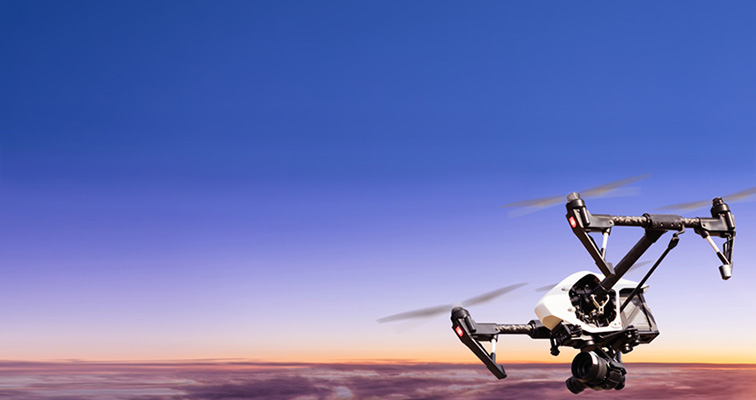
We're using unmanned aircraft for utility operations
A Flexible New Tool
Learn about how we are using unmanned aircraft systems (UAS) in our latest blog post. Read more >
- Our Vision & Commitment
- Our History
- Performance Scorecards and Metrics
- Our Leadership Team
- Newsroom
- Awards & Recognition
- Power Facts
- Innovation
- Affiliate Transactions
UAS Brochure
For information about our unmanned aircraft program, please download our one page brochure. Download brochure >
Unmanned Aircraft Systems
Unmanned aircraft, commonly known as drones, are a new tool we're using to provide more reliable service to you, our customer, by improving our operations. Unmanned Aircraft Systems (UAS), the preferred industry term, are a more efficient and cost-effective way to assess utility equipment for disaster recovery and routine maintenance in place of climbing, deploying bucket trucks or flying a rented helicopter. We want to make assessments safer, faster, and less expensive.
Hawaiian Electric's use of unmanned aircraft offers many benefits
-
Safety
Unmanned aircraft can significantly reduce the need for crews to work at heights around utility equipment like poles and structures. In Hawaii's remote, mountainous terrain, unmanned aircraft can survey hard-to-reach equipment at significantly reduced risk. -
System reliability
Unmanned aircraft can reduce outage risks by providing visual data that helps anticipate maintenance needs more accurately. -
Disaster recovery
After a severe storm, wild fire or other disaster resulting in damaged equipment and outages, unmanned aircraft can speed the recovery process by pinpointing recovery needs across our islands. -
Efficiency
While unmanned aircraft will not eliminate use of helicopters, bucket trucks and climbing remote structures, they will cost-effectively reduce these traditional assessment techniques.
Important note: The Federal Aviation Administration regulates all airspace and has three categories of unmanned aircraft system pilots: 1) hobbyist/ recreational; 2) public/government, and 3) civil/commercial. Hawaiian Electric is in the commercial category and fly within strict FAA guidelines. Only employees who are certified and part of Hawaiian Electric unmanned aircraft teams may fly on company property or as part of utility work in the field.
If you are a hobbyist or recreational pilot, or want more information, here are some links that may be helpful.
- FAA general UAS information webpage: https://www.faa.gov/uas/
- FAA guidelines for UAS hobbyists: https://www.faa.gov/uas/model_aircraft/
- Reference for hobbyists: https://knowbeforeyoufly.org/for-recreational-users/
Frequently Asked Questions
How many unmanned aircraft and pilots does Hawaiian Electric have
At launch of the UAS program, Hawaiian Electric has six unmanned aircraft in differing sizes and capabilities and accompanying control and sensing equipment. They are operated only by Hawaiian Electric's trained staff pilots. At launch, we have five trained pilots and more being added.
How did Hawaiian Electric develop its unmanned aircraft systems program?
The company started with staff members who already had regular pilot licenses. They have been fully involved in developing company standard operating procedures and, with other new unmanned aircraft pilots, have trained to fly near electric facilities and operate cameras and other sensors. In addition, Hawaiian Electric has used an outside consultant who developed a similar UAS program for San Diego Gas & Electric and who trains Federal Emergency Management Agency personnel in unmanned aircraft use in disaster recovery.
How will the images collected be protected?
We understand some people may have concerns about privacy, a concern we take very seriously. In addition to complying with federal regulations, we have strict company operating standards to define how we collect, use, and store all visual images.
What types of projects do Hawaiian Electric plan to use UAS for?
- Assess equipment in remote areas that are difficult and dangerous to reach on foot.
- Routine assessments of equipment for repairs or replacements prior to service failure, which results in more reliable service. UAS decrease the number of "climbs" to assess poles, towers, and power lines.
- Assess the tops of utility poles; identify damaged cross arms and connectors.
- Assess power plant stacks and other dangerous facilities.
- Identify Albizia tree infestations and vegetation growth near power lines which may cause a service outage.
- Assess equipment after storms, hurricanes, wild fires, or other natural disasters.



